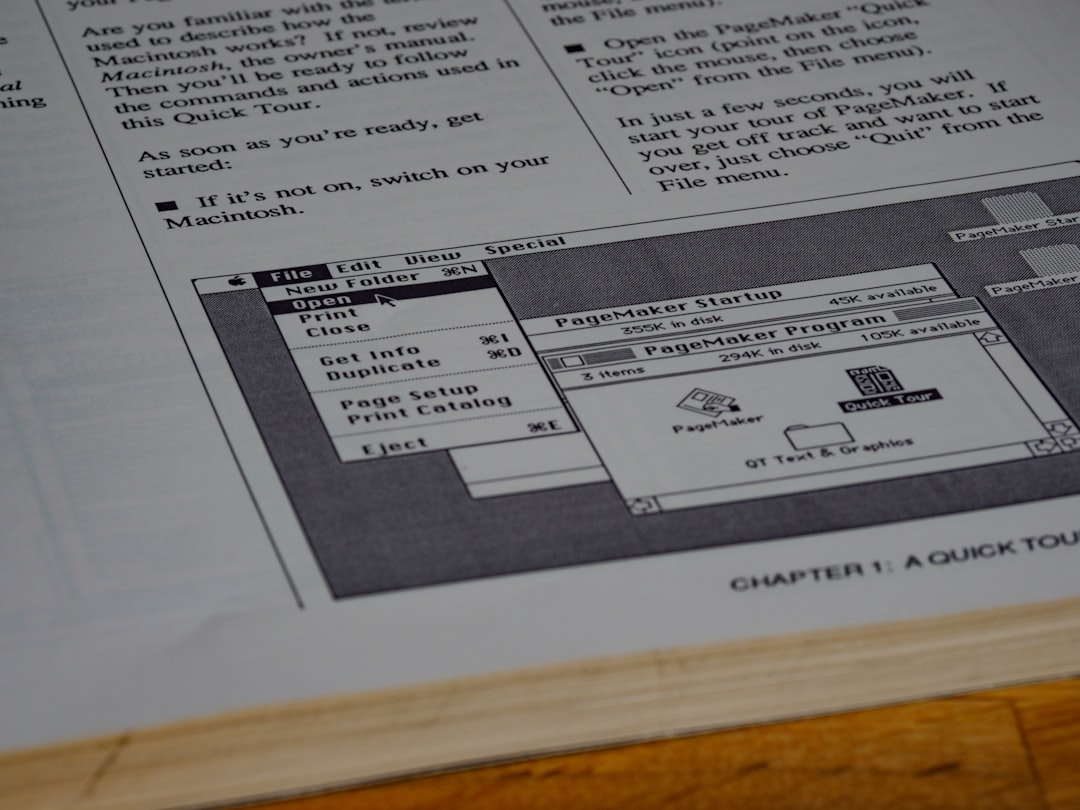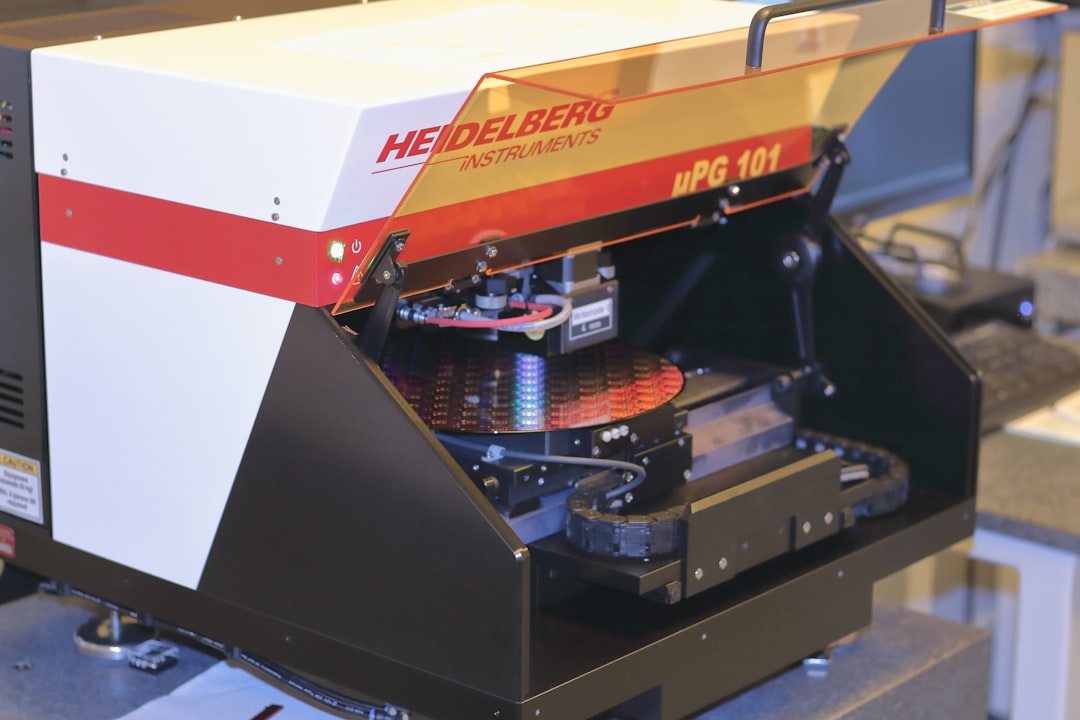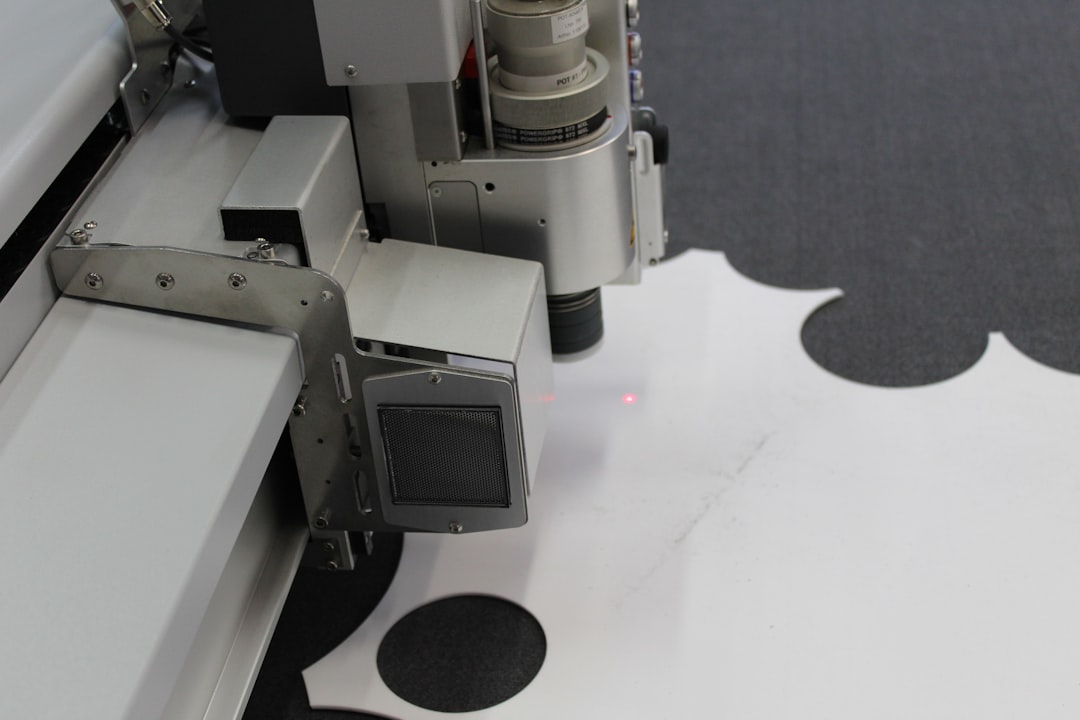

Engage prospects with a scan and streamline customer engagement with FREE QR code marketing tools by Sona – no strings attached!
Create a Free QR CodeFree consultation

No commitment

Engage prospects with a scan and streamline customer engagement with FREE QR code marketing tools by Sona – no strings attached!
Create a Free QR CodeFree consultation

No commitment
Check printing services are undergoing rapid transformation as businesses seek secure, efficient, and customizable financial document printing to support both daily operations and customer engagement. Organizations frequently face frustrations ranging from missed high-value client interactions due to manual processes to the risk of outdated account data causing payment errors or targeting mismatches. QR codes offer a practical way to modernize these workflows without forcing users to download apps or learn new systems.
As custom check printing, online check printing services, and advanced check printing software become standard, the need to bridge offline check distribution with digital engagement is more important than ever. One common industry pain point is the lack of visibility into the actions of those interacting with mailed checks, making it difficult to track engagement, eliminate unqualified leads, and nurture valuable prospects. QR codes have emerged as a powerful way to connect checks, statements, and other financial documents to online portals and payment options without complicating workflows.
Forward-thinking check printing companies now leverage QR codes to enhance document security, drive conversions, and improve the overall customer experience. This guide explores practical approaches for integrating QR codes with check printing services, showcasing how bridging physical and digital can help streamline routine processes, address campaign inconsistencies, and build a robust foundation for modern financial document management.

In a landscape where missed opportunities often arise from anonymous interactions and disconnected workflows, QR codes provide a seamless bridge between physical checks and digital actions. Recipients can respond, pay, verify, or engage instantly, which minimizes reliance on manual entry and improves data capture at the source. For finance and operations teams that rely on accurate, timely interactions, reducing friction during these critical moments can have a measurable impact on cash flow and customer satisfaction.
Start by mapping analog steps to digital destinations. Paper sign-up forms, printed instructions, and manual support outreach often slow down response times and create additional error risk. Replacing them with QR-enabled experiences reduces lag and increases the likelihood of completion. The following recommendations keep your strategy focused on conversion lift and downstream ROI.
Modern check printing companies now leverage dynamic QR code generation and integrated analytics to streamline operations, connect previously disconnected touchpoints, and recover high-value engagements that used to be lost in analog processes. When done correctly, these programs both lift conversion rates and reveal which audiences are leaning in, making future campaigns more targeted and cost effective.

Common challenges in check printing services include a persistent disconnect between mailed communications and recipients' digital journeys. Bills get separated from remittance slips, URLs get mistyped, and support lines get overwhelmed with simple inquiries. QR codes solve these problems by turning each printed document into a digital starting point that is fast, traceable, and adaptable.
This technology is especially effective in high-frequency scenarios such as payroll, vendor payments, and recurring billing. Every mailed check or statement becomes a measurable interaction rather than a static document. The cumulative effect is significant: fewer missed payments, faster reconciliation cycles, and more accurate data collection for compliance and analytics. See Sona QR’s industry page for financial services.
For materials like envelopes, check stubs, statements, and inserts, QR codes transform each touchpoint into an opportunity to engage instantly and capture data that informs the next best action.

Pain points in account security, contact management, and messaging consistency often originate with limited options for linking print to digital. The correct QR code format depends on the action you want to trigger and the level of security and trackability required. Choosing wisely improves both user experience and data quality.
In the check printing context, formats that drive to secure web flows, identity confirmation, and support triage tend to deliver the highest value. Dynamic QR codes are often preferred because they can be updated post-print and provide richer analytics without reprinting costs. Static codes still work for evergreen destinations like a help center homepage, but they lack flexibility when business needs evolve.
Dynamic QR codes stand out as a response to the pain of changing business requirements. Centralized platforms such as Sona QR let teams edit destinations, add UTM parameters, and track performance by print batch so you can continuously optimize without starting over.
Check printing providers commonly miss valuable growth moments when account-level engagement signals go unrecognized. QR codes, when thoughtfully placed, surface these signals and enable precise targeting. Every scan reveals intent, and consistent placements guide recipients to take predictable actions that your systems can measure and reinforce.
Focus on placements that align with natural user behavior. The best locations are those that appear at the moment of decision like paying, verifying, or seeking help. This not only increases scan rates but also lowers the cost of acquisition and support across your customer base.
These placements foster routine engagement, enable real-time segmentation, and help move prospects from anonymous interaction to known, actionable leads. Over time, this strategy cultivates a more predictable pipeline for both payments and product adoption.

Missed follow-up, stalled conversions, and slow support resolution often undermine customer retention. QR codes can be embedded thoughtfully to address these hurdles and turn common pain points into conversion opportunities. When people can act immediately and see results, they are far more likely to complete tasks successfully.
Organizations should design use cases that reflect the exact step a recipient needs to take. Keep the destinations focused, mobile-friendly, and secure. The fewer clicks required after a scan, the better your outcomes.
Embedding QR-driven workflows ensures that account activity is visible, properly segmented, and actionable for sales, support, or compliance teams. Done well, these experiences reduce manual labor, speed up cash collection, and elevate satisfaction at every step.
In financial document workflows, businesses regularly miss high-value prospects because they cannot see which accounts are interacting meaningfully. Each QR code scan changes that. It logs intent, context, and timing, which can then power segmented intent retargeting, prioritization, and tailored outreach.
The key is to assign distinct QR codes to specific journeys, audiences, or actions. This transforms every printed asset into a signal generator that enriches CRM records and informs smarter follow-up. Over time, you can build cohorts such as early payers, support seekers, and cross-sell receptive customers, then tailor your campaigns to each group.
With Sona QR, each code becomes a smart entry point into your funnel. The platform tags scans by campaign, asset, and destination, enabling retargeting based on actual behavior rather than assumptions.
Disconnected messaging and channel silos often produce wasted spend and confusion. QR codes act as connectors, ensuring that printed materials and in-person interactions feed into the same data systems and follow-up programs as digital channels. A unified approach reduces friction for recipients and increases operational clarity for teams.
In check printing services, the marketing mix includes both transactional and promotional touchpoints. Checks, statements, and invoices are routine interactions that can drive immediate action. Direct mail, email, and events can then reinforce those actions and uncover new opportunities. QR-enabled continuity lets you measure the complete journey.
Centralized management tools help unify tracking, campaign management, and messaging so that all QR scans feed a connected funnel. Monitor and manage campaigns on the Sona QR platform, and push scan data into your CRM and ad platforms for efficient retargeting.
Strong QR programs follow a consistent process, from selecting the right use case to iterating based on real data. Treat every initiative like a mini funnel, then scale what works across your printed assets and channels. The following checklist translates strategy into execution for check printing teams.
Start by anchoring each code to a specific outcome. A code with a vague destination reduces user confidence and hampers measurement. By choosing targeted objectives, aligning destinations with that objective, and testing thoroughly, your campaigns will be both effective and easy to report on.
Define the purpose of your QR code within the check printing journey. For instance, drive check recipients to a payment portal and identify which clients are most likely to pay quickly or need support. Other high-value examples include account verification during onboarding, reordering checks, or routing to a dispute resolution form for invoice discrepancies.
Clarifying the use case ensures you select an appropriate destination, craft a clear CTA, and set measurable goals. Align each use case with a specific KPI such as scan-to-pay rate, auto-pay enrollment lift, or time-to-resolution for support inquiries.
Opt for dynamic QR codes when you need tracking, editability, and the flexibility to update destinations without reprinting. Dynamic codes also allow you to attach UTM parameters, A/B test destinations, and attribute scans to campaigns. Static codes are fine for evergreen resources like a general help page, but they limit your ability to adapt.
In regulated or high-security environments, pair dynamic codes with secure destinations such as tokenized links or authenticated portals. This preserves the convenience of scanning while upholding compliance requirements.
Apply your logo and brand colors sparingly to maintain contrast. Add a clear, benefit-focused call to action like Scan to Pay, Verify This Check, or Get Help Now. Ensure there is enough quiet space around the code and size it appropriately for the medium. As a starting point, codes should be at least 1 inch square for letters and larger for signage or envelopes. For more guidance, see these print marketing QR tips.
Test across common devices, lighting, and angles. Validate performance on both iOS and Android, and try multiple scanning apps and native camera scanners. Confirm that the landing page loads quickly, is mobile-friendly, and clearly reflects the CTA promised at scan.
Place QR codes where recipients naturally look and act. On checks, the stub and the area near remittance details are high-impact locations. On envelopes, consider the back flap with a CTA that encourages pre-opening actions such as Scan to Pay Instantly. For statements and invoices, position codes near total due or due date sections to align with intent.
Deploy the same use case across multiple assets to compare performance by channel. For example, run Scan to Pay on the check stub, envelope, and email footer to see which medium drives the highest scan-to-pay conversion.
Monitor scan volume, scan-to-action conversion rates, and downstream outcomes such as payment time and support resolution. Identify drop-off points and test different CTAs, placements, or landing page designs. Use device and location insights to tailor outreach, such as sending reminders at the times recipients typically scan.
Modern solutions like Sona QR automate tracking and reporting. With dashboards that attribute scans to assets, campaigns, and audiences, teams can refine quickly and reallocate budget to the highest-performing placements.
Modern solutions automate much of this work so your team can focus on revenue-impacting improvements instead of manual troubleshooting. Over time, the combination of disciplined execution and iterative optimization compounds your gains, turning QR into a core capability across your check printing operations. Start creating QR codes for free.
A lack of granular visibility into recipient actions has long plagued check printing workflows. Teams could not connect mailed efforts to concrete outcomes, which made planning and optimization difficult. Modern tracking approaches give you the data to link scans to actions and actions to revenue, finally making print measurable.
Why it matters is simple: knowing someone scanned a code is helpful, but you need to understand what happened next. Did the scan lead to a payment, a support ticket, an account update, or a stalled session that needs a reminder? With accurate attribution, you can identify your best channels, uncover friction points, and focus resources on what works. Learn more about offline attribution.
Sona QR captures real-world engagement, while Sona.com enables identity resolution and journey analytics. Together, they translate scan behavior into insights and actions that help you optimize spend, improve experiences, and connect offline interactions to measurable outcomes.
As QR adoption expands, small refinements create significant improvements in scan rates and conversion. Prioritize clarity in messaging, consistency in placement, and automation in follow-up. The more predictable and repeatable your approach, the more confident your team will be in scaling it.
Choose tips that match your most common media and workflows. For many check printing providers, that means optimizing code placement on check stubs and statements, then connecting scan activity to payment and support systems for immediate action.
A practical example is placing a QR code on the check stub that initiates an instant re-order flow for checks or directs to a secure portal for ACH setup. What used to be an invisible or delayed request becomes a trackable action that can trigger automated confirmation and status updates.

QR programs in check printing are versatile enough to support security, payments, and service improvements. The most successful implementations align tightly with recipient needs, reduce steps, and feed data back into core systems for continuous improvement. Consider how these examples mirror common scenarios in your own operations.
When you pilot new placements, set clear hypotheses and metrics. For instance, if you embed a Scan to Verify code on high-value checks, measure the reduction in fraud claims and support inquiries. If you place a Scan to Pay code on envelopes, compare scan-to-pay conversion against codes on check stubs or statements to find the best-performing placement.
These patterns show how QR codes drive both operational efficiency and customer delight. Use them as a springboard for your own pilots, then iterate based on scan and conversion data.
Execution quality determines whether QR codes elevate your operations or become another overlooked element on the page. Scannability, messaging, and placement matter. So do the systems behind the scan, such as fast-loading pages and clear next steps. Treat every code like a micro-experience worth designing.
Avoid predictable mistakes by adopting a simple quality assurance process. Test initial designs in real contexts, validate scannability at typical viewing distances, and confirm the destination matches the promise in the CTA. Finally, close the loop with analytics and automation so that every scan leads to measurable progress.
QR codes are becoming a core capability for check printing services that want to close visibility gaps, mitigate fraud, and improve targeting. By designing for clarity, scannability, and speed, you turn each document into an onramp for action and a source of insight.
QR codes are more than convenient shortcuts. In check printing services, they provide a strategy for transforming every printed surface into a digital entry point and every moment of interest into measurable action. When you combine thoughtful placement, secure destinations, and dynamic management, you turn routine mailings into a responsive, data-driven engagement engine.
The payoff spans the full lifecycle. You accelerate payments, simplify verification, reduce support load, and surface high-intent audiences for upsell and retention. With platforms like Sona QR and Sona.com, you gain the control and visibility to manage codes at scale, update destinations without reprints, sync scan data with your CRM, and attribute revenue to offline-to-online journeys. The result is a modernized check printing operation that is secure, agile, and built for growth.
QR codes have revolutionized the check printing services industry by transforming traditional checks into powerful, interactive tools that drive conversions and enhance security. Whether it’s streamlining payment verification, enabling instant access to transaction details, or fostering customer trust, QR codes replace cumbersome processes with seamless, trackable interactions that elevate both efficiency and customer satisfaction. Imagine being able to monitor which checks lead to faster payments or improved client engagement—turning every printed check into a measurable asset.
With Sona QR, you can effortlessly create dynamic, trackable QR codes that update instantly without the need for reprinting, connecting each scan directly to actionable insights and revenue outcomes. This means smarter campaigns, reduced fraud risks, and a clearer understanding of your customer journey. Start for free with Sona QR today and transform your check printing services into a cutting-edge conversion engine.
The best check printing services offer secure, efficient, and customizable printing with features like dynamic QR codes, integrated analytics, and seamless CRM integration to enhance security and customer engagement.
Choose a check printing service that provides dynamic QR code capabilities, strong security features, integration with your CRM and accounting systems, customizable check designs, and supports tracking and analytics for improved operational visibility.
Costs vary depending on features like dynamic QR code generation, customization options, analytics, and integration capabilities, but modern services often reduce operational costs by automating workflows and reducing manual errors.
Design your own checks by selecting appropriate QR code types, including clear calls to action, ensuring adequate size and quiet space around codes, applying brand colors sparingly, and testing for scannability across devices and lighting conditions.
Security features include dynamic QR codes linked to authenticated sessions or one-time tokens for identity confirmation, check verification, fraud prevention, and tamper-evident packaging with QR labels to reinforce trust without slowing delivery.
Use Sona QR's trackable codes to improve customer acquisition and engagement today.
Create Your FREE Trackable QR Code in SecondsJoin results-focused teams combining Sona Platform automation with advanced Google Ads strategies to scale lead generation

Connect your existing CRM

Free Account Enrichment

No setup fees
No commitment required

Free consultation

Get a custom Google Ads roadmap for your business






Launch campaigns that generate qualified leads in 30 days or less.
